Click on images to enlarge
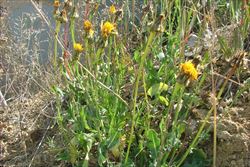
habit (Photo: Sheldon Navie)
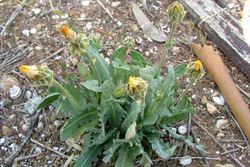
habit (Photo: Sheldon Navie)
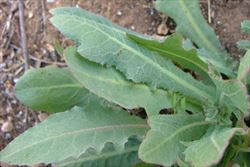
bluish-green lower leaves (Photo: Sheldon Navie)
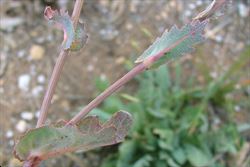
close-up of stem and upper leaves (Photo: Sheldon Navie)
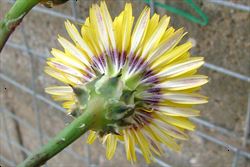
underside of flower-head showing floral bracts (Photo: Sheldon Navie)
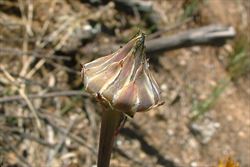
young seed-head (Photo: Sheldon Navie)

mature seed-head (Photo: Sheldon Navie)
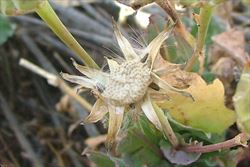
close-up of old seed-head with a few seeds and spreading floral bracts (Photo: Sheldon Navie)
Scientific Name
Reichardia tingitana (L.) Roth
Family
Asteraceae (Queensland, New South Wales, the ACT, Victoria, Tasmania, Western Australia and the Northern Territory)Compositae (South Australia)
Common Names
false sow-thistle, false sowthistle, reichardia
Origin
Native to the Mediterranean region and western Asia.
Naturalised Distribution
Widely naturalised in southern Australia (i.e. in western New South Wales, western and southern Victoria, many parts of South Australia and the western parts of Western Australia). Also occasionally naturalised in other parts of Western Australia.
Notes
False sowthistle (Reichardia tingitana) is regarded as a minor environmental weed in Western Australia, where it grows on river flats and in coastal dunes as well as in disturbed sites (i.e. near habitation and along roadsides). It is mainly found from Shark Bay to Jurien, and is particularly common around Geraldton.
This species is also weedy in similar situations in South Australia (i.e. on alluvial river flats and coastal dunes) and has been recorded in numerous conservation areas in this state (i.e. in Marino Conservation Park, Onkaparinga River Recreation Park, Coffin Bay National Park, Coorong National Park, Seal Bay Conservation Park and Semaphore Park Coastal Reserve).
False sowthistle (Reichardia tingitana) is also a common weed in semi-arid woodlands and samphire shrublands in Victoria and grows on sandy soils and sandy red earths in western New South Wales. It is present in conservation areas in these states too (i.e. Barkindji Biosphere Reserve in north-western Victoria and Kinchega National Park in south-western New South Wales).

